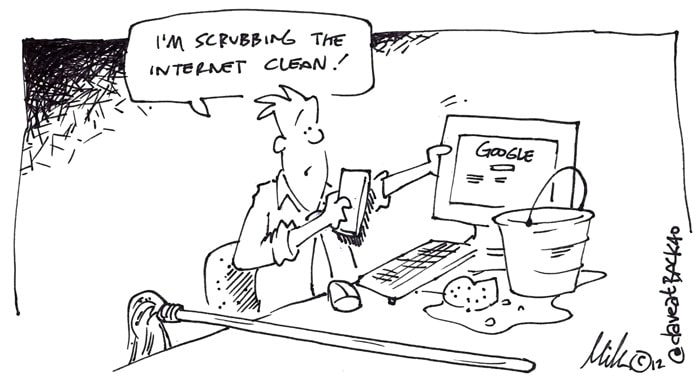What do you do when you accidentally put too much information on the web? If you have a CMS or access to your website – it’s pretty easy to just take down, remove links or hide the information, but what if the information is already showing up in search results? Or cached results?
Here are some examples of information that may need to be removed from a website and/or a search engine index as quickly as possible:
- HIPPA violations
- Private membership information somehow shows as public
- Customer’s names and account numbers associated together in URL strings, like: www.exampleBwebsite.com/customers/mary-jane-espenoza-id-8675309/
- Web pages in development that were ‘somehow’ made active

Removing pages from Google Search Results
1. Have a Google Account
If you have a Google account, you should be able to log into Google’s Webmasters section. After you set up your site, you can take advantage of the many tools Google offers. But the one you need to remove page is removals. If you can’t find the link (I couldn’t), here it is: https://www.google.com/webmasters/tools/removals.
2. Acquire the URL of the page you want removed from search
URLs include pages, images, documents, anything on your server. If you can get to it through your site, Google can find it too.
3. Move and/or delete the page/image/document
To remove a page from Google Search, the page must no longer exist on the URL you are requesting removed.
4. Remove the URL
Submit a removal request, follow the dialogue, and wait. It will take a bit before the URLs are completely removed.
Obviously, the above process will take some time and resources. But we can attest that it works. So if you want the information gone – start scrubbing.
Please note: just because the URL is removed from Google, it doesn’t mean that it’s removed from other search engines. Also note that the content/image/document of the page can exist elsewhere if it was downloaded and put on another server.